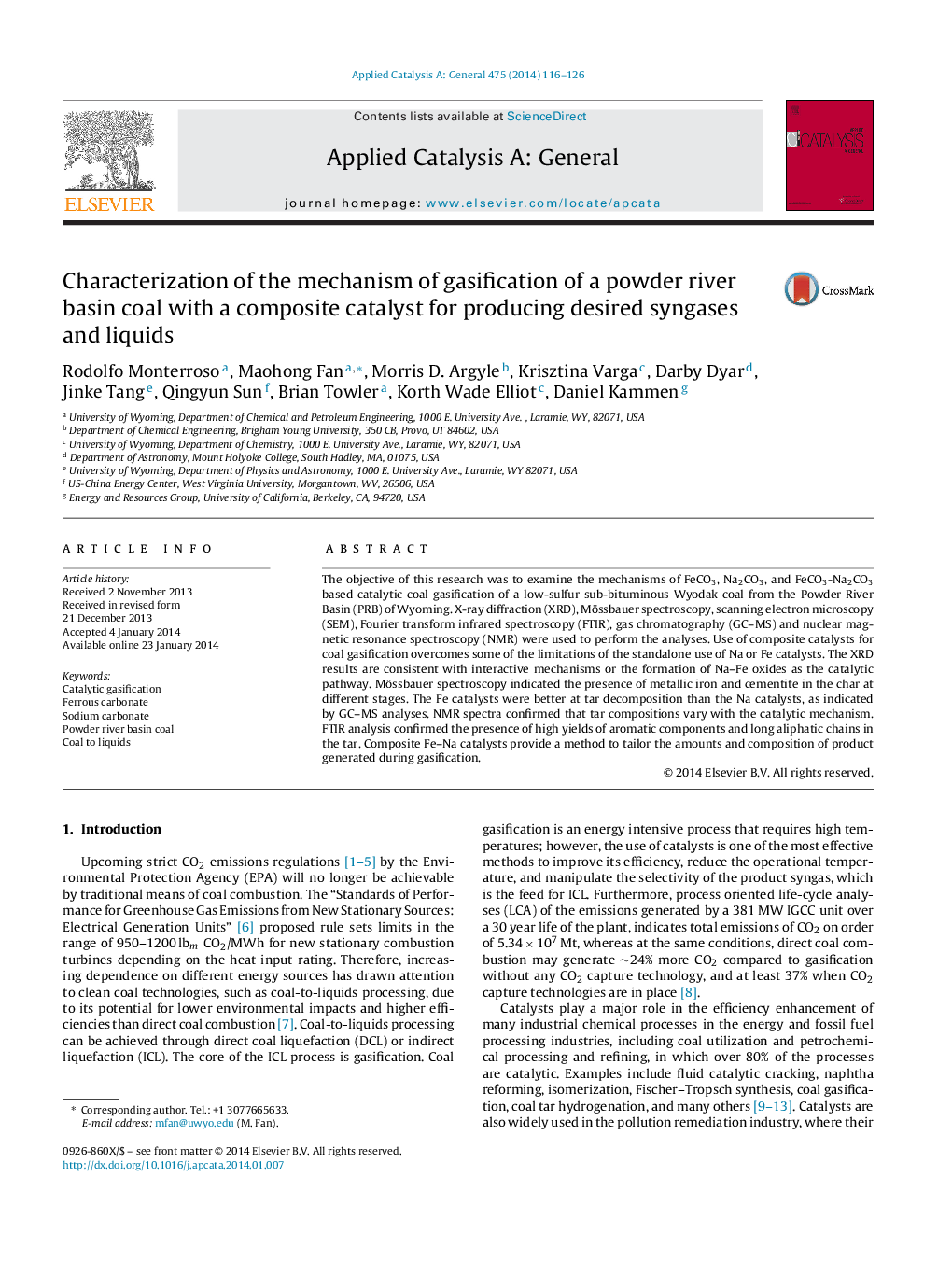| Article ID | Journal | Published Year | Pages | File Type |
|---|---|---|---|---|
| 39824 | Applied Catalysis A: General | 2014 | 11 Pages |
•The catalytic mechanism of FeCO3-Na2CO3 for coal gasification was examined.•Synergy includes interactive mechanisms and formation of Na–Fe oxides.•Tar decomposition was stronger with iron catalysts.•High yields of aromatics and long aliphatic chains were observed in all tars.•Composition of the gasification product can be tailored with the catalyst ratio.
The objective of this research was to examine the mechanisms of FeCO3, Na2CO3, and FeCO3-Na2CO3 based catalytic coal gasification of a low-sulfur sub-bituminous Wyodak coal from the Powder River Basin (PRB) of Wyoming. X-ray diffraction (XRD), Mössbauer spectroscopy, scanning electron microscopy (SEM), Fourier transform infrared spectroscopy (FTIR), gas chromatography (GC–MS) and nuclear magnetic resonance spectroscopy (NMR) were used to perform the analyses. Use of composite catalysts for coal gasification overcomes some of the limitations of the standalone use of Na or Fe catalysts. The XRD results are consistent with interactive mechanisms or the formation of Na–Fe oxides as the catalytic pathway. Mössbauer spectroscopy indicated the presence of metallic iron and cementite in the char at different stages. The Fe catalysts were better at tar decomposition than the Na catalysts, as indicated by GC–MS analyses. NMR spectra confirmed that tar compositions vary with the catalytic mechanism. FTIR analysis confirmed the presence of high yields of aromatic components and long aliphatic chains in the tar. Composite Fe–Na catalysts provide a method to tailor the amounts and composition of product generated during gasification.
Graphical abstractFigure optionsDownload full-size imageDownload high-quality image (62 K)Download as PowerPoint slide
